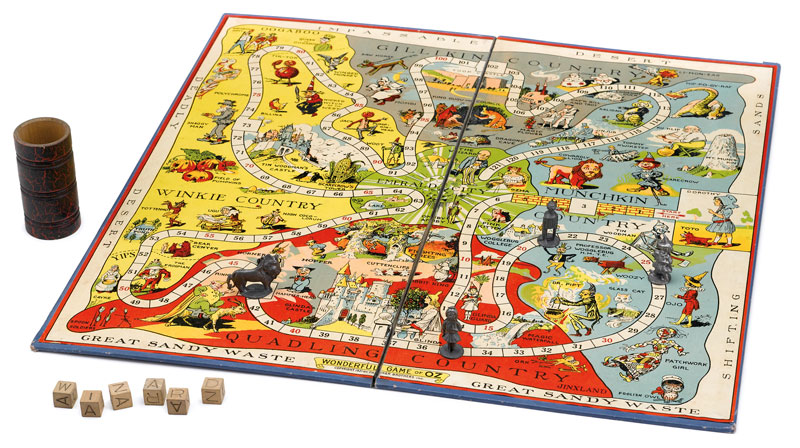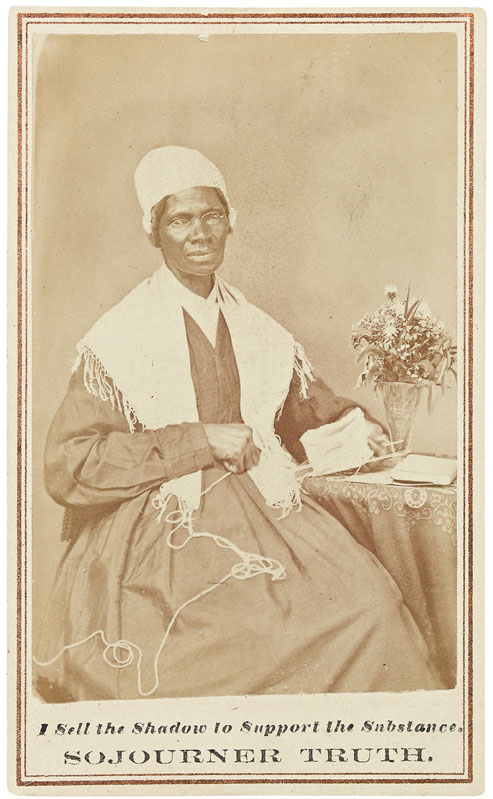Look Beyond Books
Literary-themed ephemera and realia may seem out of scope for strict book collectors, but these “odd lots” add texture to a collection By Erin Blakemore Erin Blakemore is a Boulder, Colorado–based historian, journalist, and author of the award-winning The Heroine’s Bookshelf (Harper). Her work has appeared in publications like Time, mental_floss, and Smithsonian.com. Learn more at erinblakemore.com.
At last year’s landmark Grolier Club exhibit, One Hundred Books Famous in Children’s Literature, it struck us at Fine Books how important “non-books” and other literary objects can be to a book collection. Exhibit curator and antiquarian bookseller Chris Loker included games, toys, and other ephemera associated with the rare titles on view.
We asked Loker to explain why ephemera and realia were necessary components to the exhibit, as well as to many personal collections. She said, “The books were, of course, the central focus, but my additional intent was to show the trajectory of the books into the culture of their times, to underscore their enduring fame and impact on readers of all ages. I felt that well crafted or printed ephemeral artifacts like toys, dolls, and games would enliven the books and deepen the exhibition viewers’ reactions to them.” She added, “I think a well selected ephemeral object is able to reach into the heart of a book and make it tangible, and even tactile, for a person of any age who has read that book. So seeing finely crafted realia, like an engraved ivory hornbook, or a hand-carved wooden Pinocchio doll, brings the essence of the book to life in front of the viewer’s eyes.”
We found more than a dozen examples of this type of material, recently sold at auction, which would make intriguing addenda to private libraries, for those who are willing to look beyond books. –Editor
Your Turn
“Wizard of Oz” board game, manufactured by Parker Bros. in 1922.
This item might have fit right in at the Grolier Club’s exhibition—it’s a “Wizard of Oz” board game, manufactured by Parker Bros. in 1922. The complete boxed game with a folding game board, eight-page pictorial rule booklet, wooden dice cup, six wooden die, and four pewter figures depicting Dorothy, the Scarecrow, the Tin Man, and the Cowardly Lion, must have appealed to many an Oz fan when it followed the yellow brick road to auction last year.
Freeman’s, $938 / April 10, 2014
Little People, Big Sale
Painted plaster display of Gulliver in the “Land of the Lilliputians”
Swears and Wells was one of Victorian London’s best-known department stores, but its original incarnation was as a “Lilliputian Warehouse” specializing in children’s clothing. Appropriate, then, that the company should commission a model of Gulliver’s capture by the Lilliputians in Gulliver’s Travels for London’s Great Exhibition of 1851. This model, which features Jonathan Swift’s satirical hero in dire straits, is a copy of the one that appeared at the Great Exhibition and now resides in the Museum of German Toys in Sonneberg. We hope that this one is the centerpiece of an incredible Swift collection.
Christie’s, $32,920 / September 3, 2014
Accessory to Magick
Middle Eastern dagger owned and used by Aleister Crowley
Novelist and esoteric celebrity Aleister Crowley raised eyebrows for his unconventional behavior and his controversial views. Known as “the wickedest man in the world,” Crowley became a countercultural icon with his experiments with drugs, sex, and magickal [sic] religious practices that were labeled everything from Satanic to sublime. Crowley wore this dagger around his neck in an intricate scabbard as part of his ritualistic garb. The curved dagger is an example of a late nineteenth-century Arabic janbiya, which was worn to indicate social status and often used in rituals. Like Hunter Thompson’s Gonzo sword, this object would be quite the focal point in a Crowley collection.
Bloomsbury Auctions, $15,500 / December 11, 2014
Shadow and Substance
Carte-de-visite portrait of Sojourner Truth
“Ain’t I a woman?” cried former slave and abolitionist Sojourner Truth in a rousing 1851 speech urging freedom for blacks. After her escape, she became an itinerant evangelist and abolitionist known for her writing and rousing speeches. This carte-de-visite was used by Truth to raise money for her travel. Historians think that the phrase “I sell the shadow to support the substance” refers to early photographers’ claims that they could “secure the shadow ’ere the substance fade,” and to Truth’s commitment to raising substantive funds for her causes with her image (shadow), and to her insistence on controlling her own image and person as a person who once was enslaved.
Swann Galleries, $3,250 / March 26, 2015











